Diffuse Hair Loss: What Can Be Done?

Sommaire
Hair loss is a major concern for many people, whether it’s occasional shedding or more pronounced alopecia. Among the different forms of hair loss, diffuse baldness is characterised by a generalised thinning of the hair, without distinct bald areas (Harrison & Bergfeld, 2009). This phenomenon, often temporary, can be caused by various factors such as stress, nutritional deficiencies or hormonal imbalances. Read on to discover the causes of diffuse alopecia, the warning signs to watch for, as well as the available solutions to prevent and treat this rather troublesome hair problem.
What is Diffuse Baldness?
Diffuse hair loss refers to generalised hair loss that affects the entire scalp. Unlike androgenetic alopecia, which causes hair loss in specific areas (such as the temples and crown of the head), diffuse baldness causes overall thinning of the hair (Qi & Garza, 2014).
This type of hair loss affects both men and women, although women are slightly more prone to it. Clinical studies have shown that women represent a significant proportion of patients presenting with diffuse hair loss, with an average age of approximately 31 years (Agarwal et al., 2019).
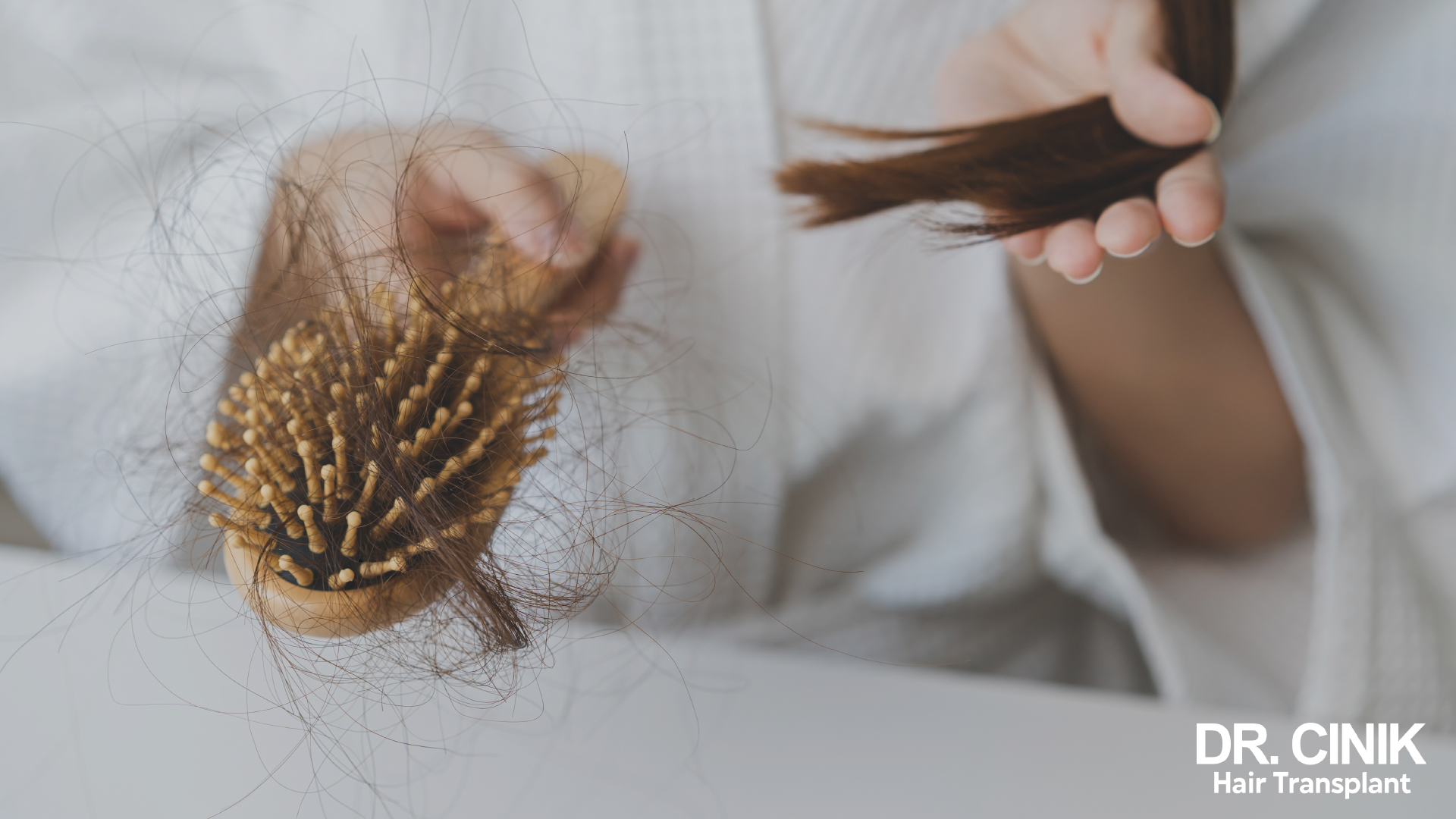
Diffuse hair loss can be temporary or chronic depending on its underlying causes. Once the trigger is identified and treated, regrowth can resume naturally, although this can take several months.
What Causes Diffuse Alopecia?
Diffuse alopecia can have various origins, but one of the most common causes is telogen effluvium. This disruption of the hair cycle leads to significant hair loss across the entire scalp. This disruption, which typically lasts for a period of two to four months, can be triggered by a variety of factors:
- Stressful events, whether physical or emotional, such as a severe emotional shock (death of a loved one, accident, relationship breakdown) or prolonged intense stress (Harrison & Bergfeld, 2009)
- Significant hormonal changes related to pregnancy, childbirth, miscarriage, or stopping hormonal contraceptives
- Major medical procedures, including those requiring general anaesthesia
- Significant infectious diseases such as influenza, typhoid, scarlet fever, or even a severe dental infection. Research shows that up to 28% of patients with diffuse hair loss have underlying chronic infections (Agarwal et al., 2019)
- Significant nutritional deficiencies, often resulting from restrictive diets. Low haemoglobin and ferritin levels have been significantly associated with some types of diffuse hair loss (Agarwal et al., 2019)
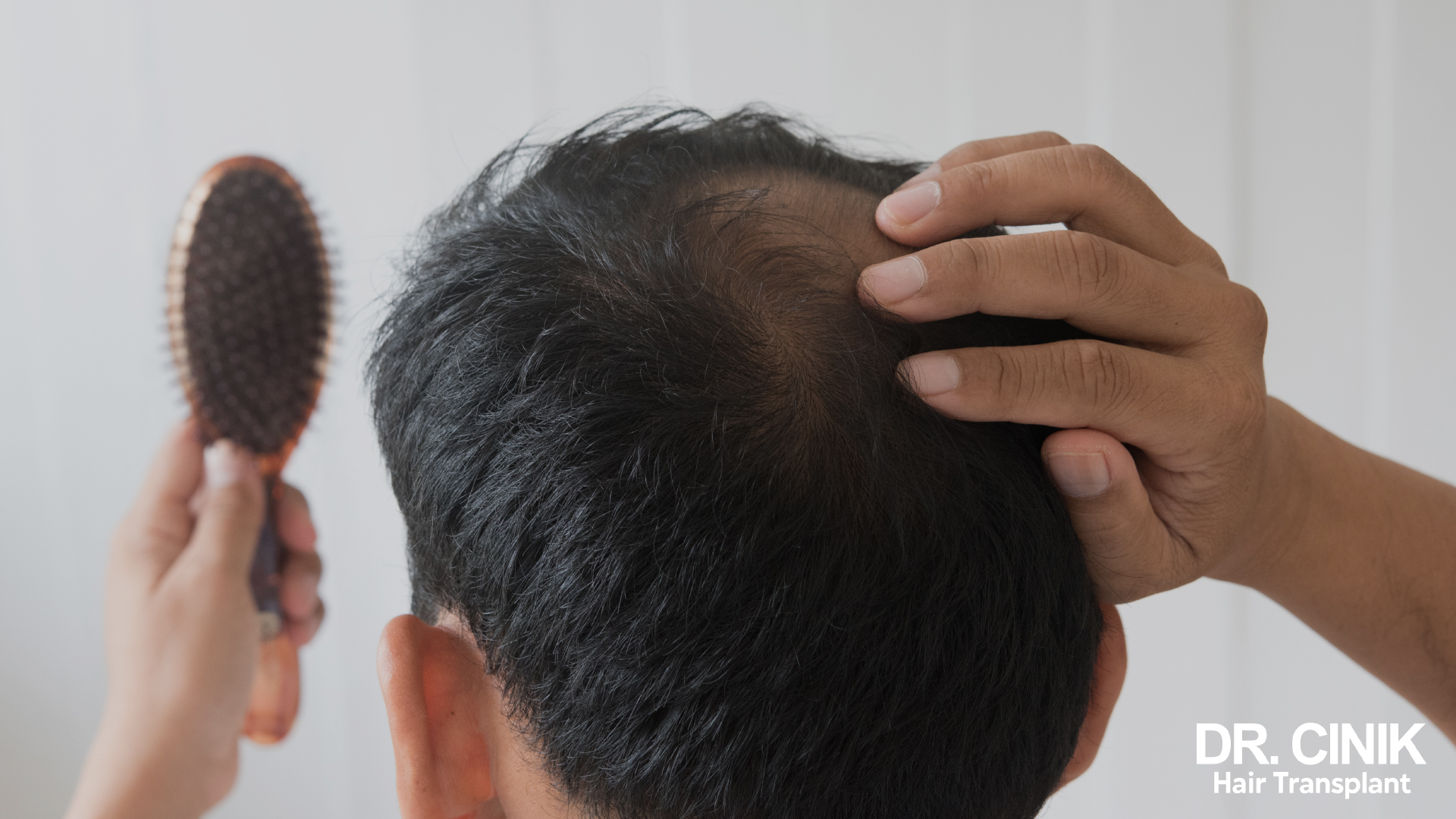
There is also another form of alopecia, androgenetic alopecia, which can progress to a diffuse form if left untreated. This variant initially manifests locally, mainly affecting the vertex and temporal gulfs in men, while in women it preferentially affects the frontal areas and vertex (Qi & Garza, 2014).
When Should You Be Concerned About Hair Loss?
To understand when hair loss becomes a concern, it is essential to know the natural hair growth cycle. This cycle is divided into several distinct phases:
- The growth phase (anagen): During this period, which can last from 1 to 5 years, the hair grows continuously in the hair follicle.
- The transition phase (catagen): This short period of about three weeks marks a significant slowdown, or even a complete stop, in hair growth.
- The resting phase (telogen): For 2 to 4 months, the hair completely stops growing before falling out naturally.
- Renewal: A new cycle begins with the appearance of a new hair bulb that pushes the old hair out of the follicle.
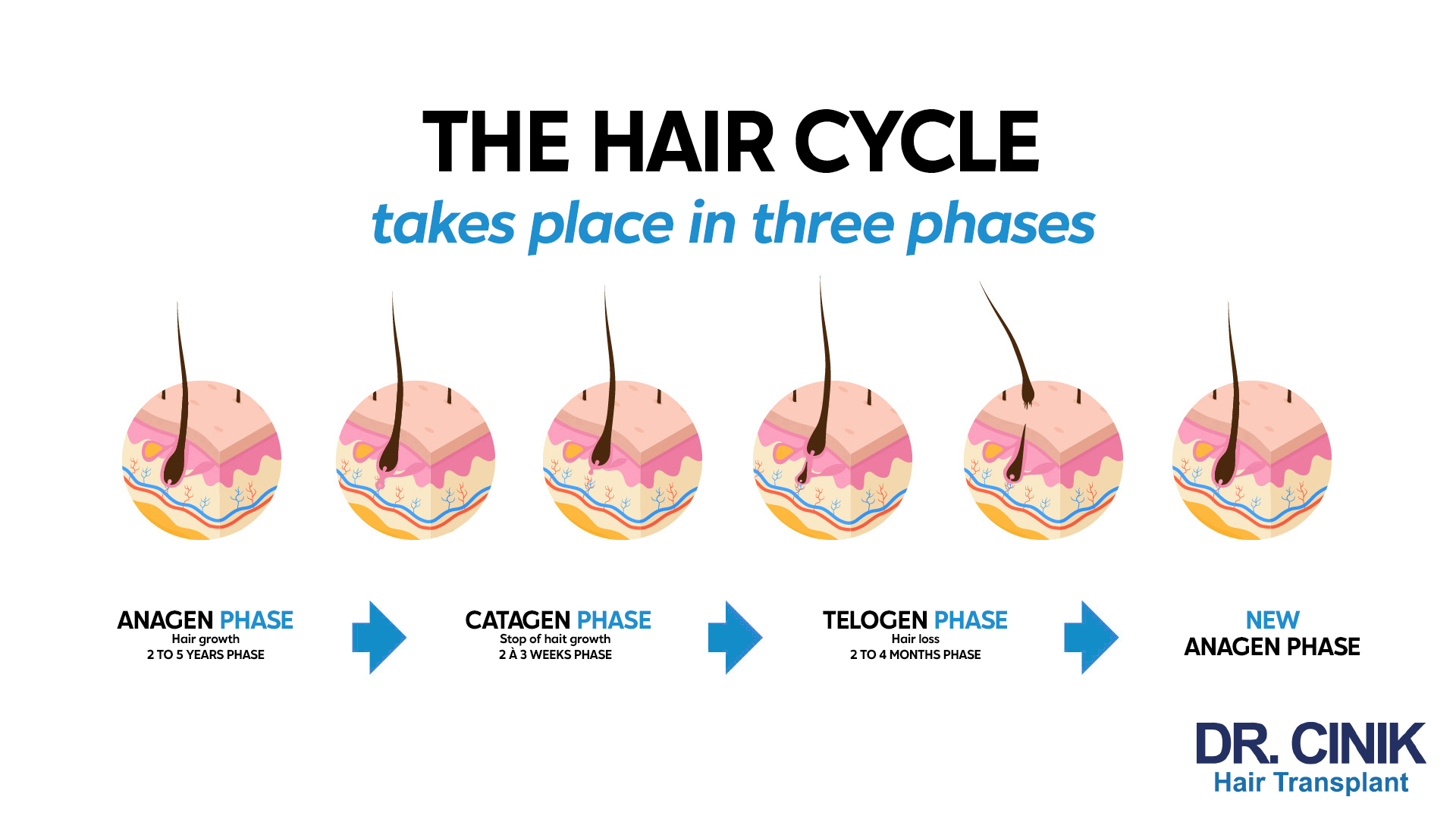
Daily hair loss is part of the natural hair renewal process. The generally accepted norm is between 50 and 100 hairs per day (Harrison & Bergfeld, 2009). Beyond this threshold, it becomes necessary to consult a professional for a more in-depth diagnosis.
How to Diagnose Diffuse Alopecia?
The diagnosis of diffuse alopecia is based on a set of clinical and biological examinations to identify the underlying cause of hair loss and differentiate this condition from other forms of alopecia, such as androgenetic alopecia or alopecia areata.
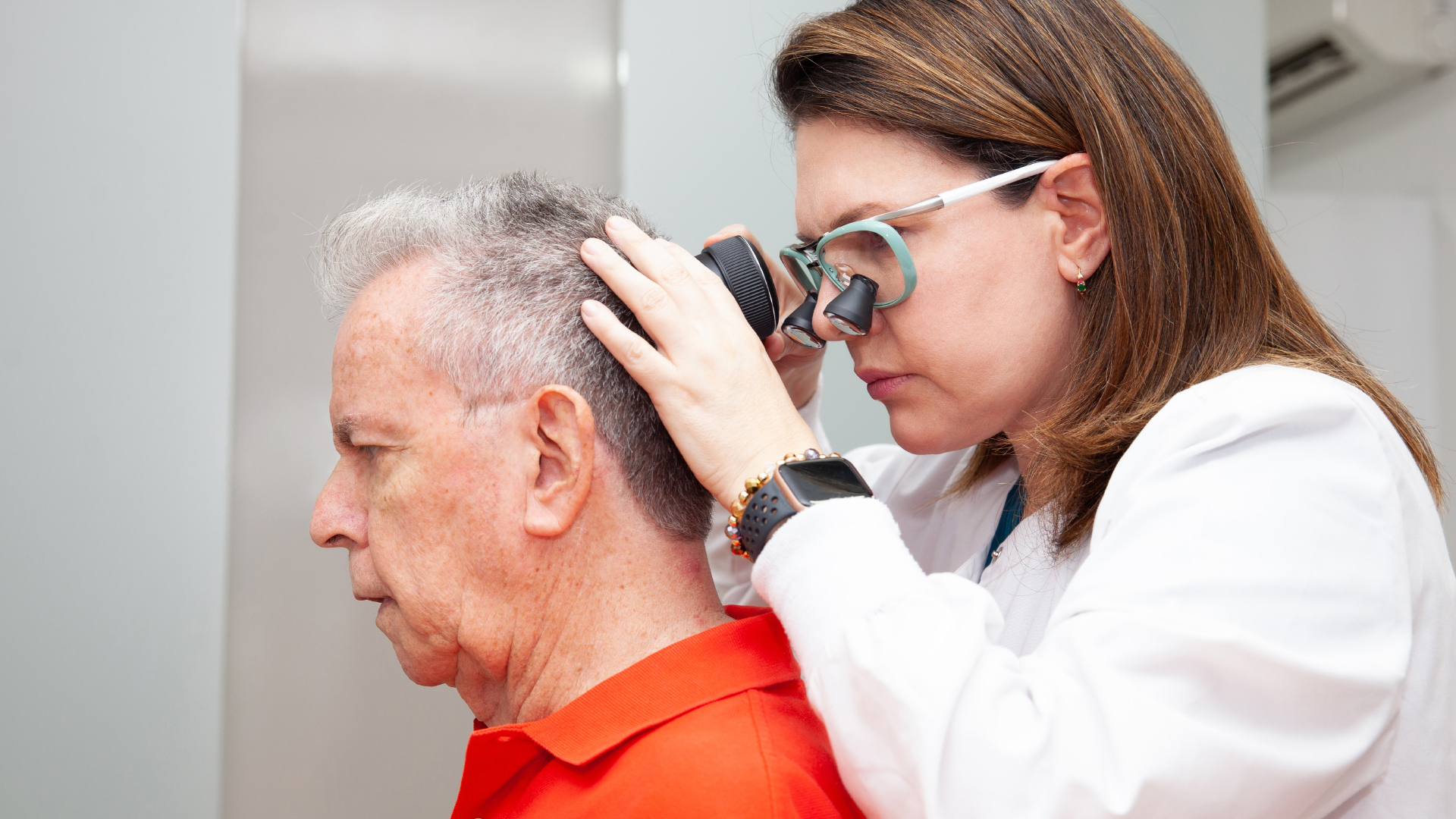
The dermatologist begins with an in-depth consultation with the patient to identify potential triggers. Several key questions are addressed:
- When did the hair loss start?
- Is the loss sudden or gradual?
- Have there been any significant events in the last few months (intense stress, illness, childbirth, rapid weight loss, hormonal changes)?
- Is the hair loss accompanied by symptoms such as itching, scalp irritation or a burning sensation?
- Does the patient have a family history of alopecia?
- Are they taking medications that can affect hair growth?
A clinical examination of the scalp is then performed to observe the density of the hair, its implantation and its general condition.
A traction test can be performed: it consists of gently pulling on a lock of hair to assess the number of hairs that become detached. Excessive hair loss can be a sign of telogen effluvium (Harrison & Bergfeld, 2009).
To further the diagnosis, the specialist can perform a trichogram, which is a microscopic examination to analyse the proportion of hair in the growth phase (anagen) and in the resting phase (telogen). Trichoscopy, on the other hand, is an imaging technique that allows the scalp to be examined in more detail and to detect possible abnormalities of the hair follicle.

Finally, blood tests are often prescribed to look for nutritional deficiencies (iron, zinc, vitamin B), hormonal imbalances (thyroid, testosterone, oestrogen), or underlying diseases that may cause hair loss. Clinical studies have shown that hypothyroidism is one of the medical conditions most commonly associated with diffuse hair loss, present in approximately 14% of patients (Agarwal et al., 2019).
All of these tests make it possible to establish an accurate diagnosis and direct the patient towards appropriate treatment.
How to Treat Diffuse Alopecia?
The management of diffuse alopecia largely depends on its underlying cause. Several therapeutic approaches are available.
For acute or chronic forms whose causes are identified, treatment first aims to correct the triggering factors. This may include stress management, correcting nutritional deficiencies, or treating underlying conditions (Harrison & Bergfeld, 2009).
For androgenetic alopecia, two main treatment options are available: drug treatments and surgical solutions.
Drug Treatments
In the context of androgenetic alopecia, Minoxidil is often recommended. This topical treatment stimulates blood microcirculation in the scalp, prolonging the growth phase of hair follicles. Its regular application can slow hair loss and improve hair density (Qi & Garza, 2014).
For men, Finasteride, a DHT (dihydrotestosterone) inhibitor, may be prescribed to block the hormone responsible for follicle miniaturisation. However, this medication is reserved for male use due to its hormonal effects.
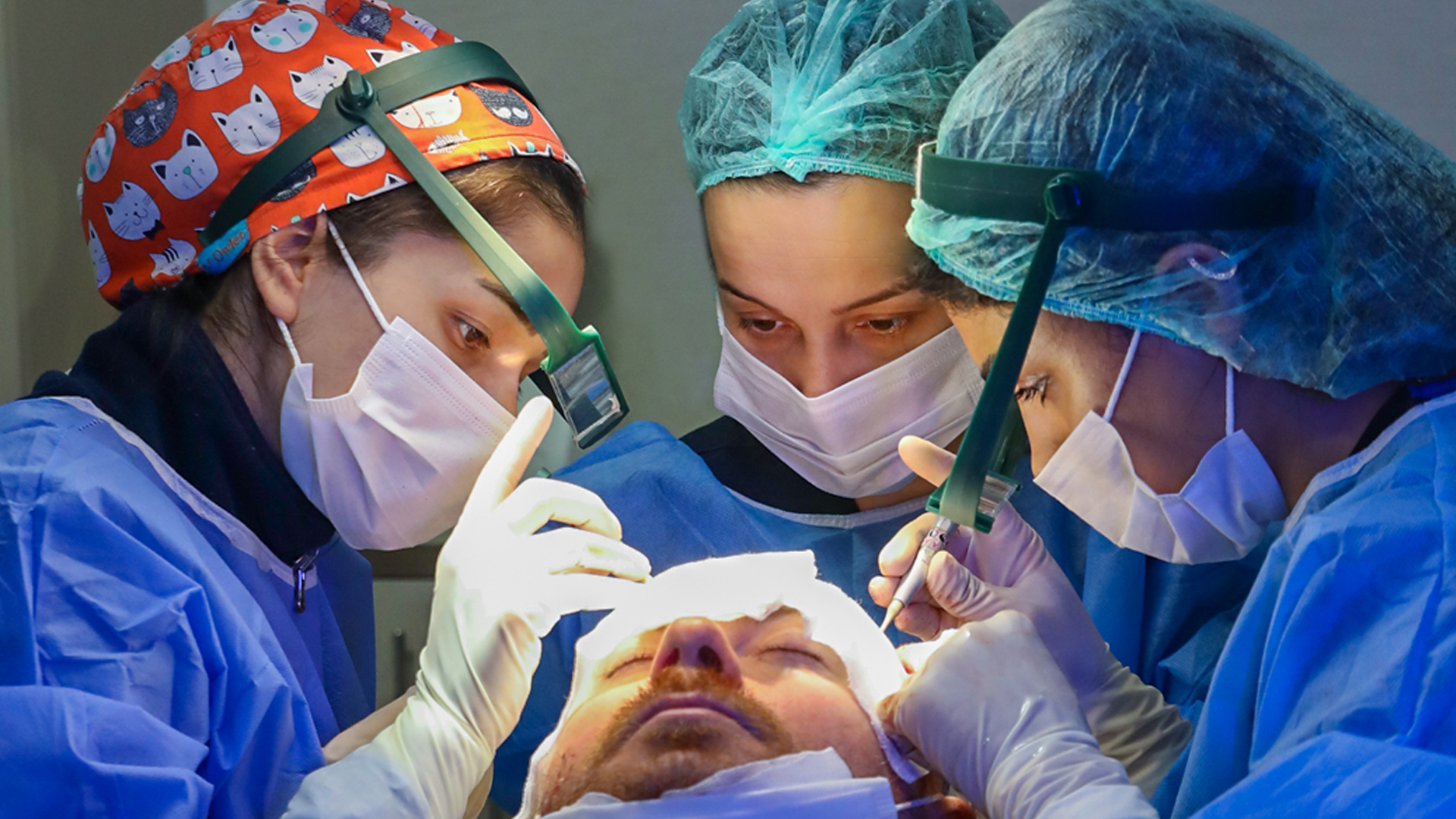
Hair Surgery
Hair transplantation is today the most effective and sustainable solution for restoring dense hair. Two modern techniques stand out in particular: FUE and DHI, each with its own specificities and advantages.
In a FUE hair transplant, the surgeon uses a micro-punch of less than a millimetre to individually extract the follicular units from the donor area, located at the back of the skull. These follicles are then sorted and meticulously prepared before being reimplanted one by one in the areas to be treated. This technique does not leave a linear scar and allows for rapid recovery.
DHI (Direct Hair Implantation) represents the most advanced evolution of hair transplantation. It uses a special instrument called a Choi pen, which allows the direct extraction and implantation of grafts in a single step. This technique offers several major advantages: increased precision in the orientation and depth of the implants, better hair density, and a significant reduction in graft handling time, thereby increasing their survival rate.
Diffuse Hair Loss: What to Remember
- Diffuse baldness causes homogeneous hair loss without marked bald spots.
- The causes are multiple and can include stress, hormonal changes, surgical interventions, infectious diseases and nutritional deficiencies (Harrison & Bergfeld, 2009).
- A daily loss of up to 100 hairs is considered normal, but beyond that, a consultation with your GP or a trichologist is recommended to establish an accurate diagnosis.
- Telogen effluvium is a temporary and reversible hair loss caused by a triggering factor (stress, deficiencies, diseases), while androgenetic alopecia is a progressive and chronic hair loss due to hormonal and genetic factors (Qi & Garza, 2014).



